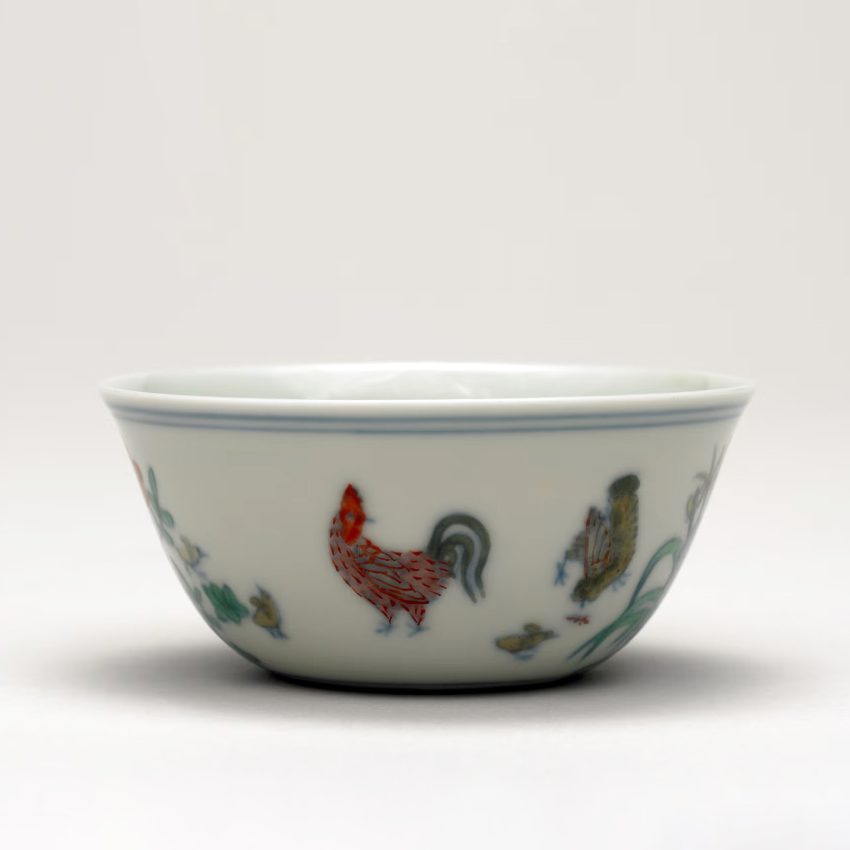
British Museum gifted Chinese porcelain
. . . . . . . . .
The British Museum has been gifted what is believed to be the highest-value bequest ever received by a UK museum with the acquisition of Chinese ceramics worth one billion pounds. Trustees of the Sir Percival David Foundation of Chinese Art, which owns the works, are to donate David’s world-famous 1,700-piece collection of Chinese ceramics dating from the third to the 20th century. The works have been on loan to the museum since 2009 and are considered to be the very best examples of Chinese craftsmanship anywhere in existence.
Doucai “Chicken cup”, Ming dynasty, Chenghua reign, 1464-1487. This tiny porcelain cup, used to serve wine for the Chenghua emperor, was crafted at the imperial kilns in Jingdezhen and is decorated with a cockerel, hens and chicks pecking for food. Long before the invention of opaque enamels, ceramic painters achieved depth of colour by layering yellow, red, green or aubergine-black enamels in different intensities within the underglaze blue outlined design. Strict quality control ensured the emperor’s court was supplied only with the finest quality porcelains and any ceramics with flaws or mistakes in their decoration were immediately destroyed.
[Photo: The Trustees of the British Museum]
. . . . . . . . .